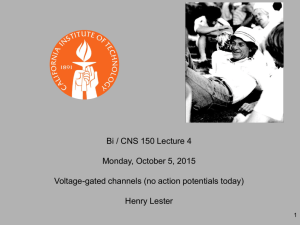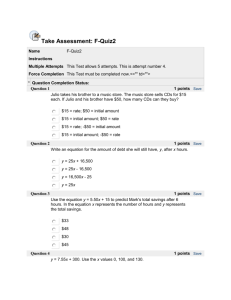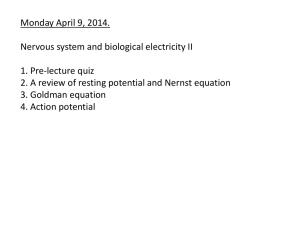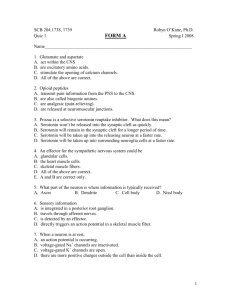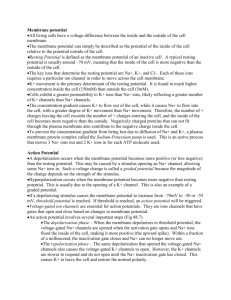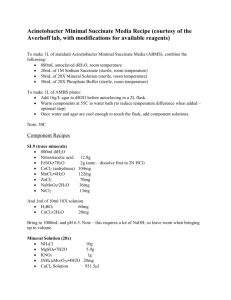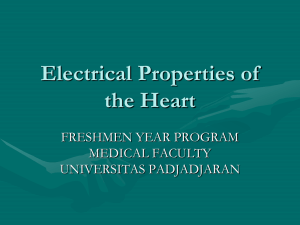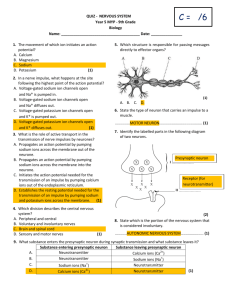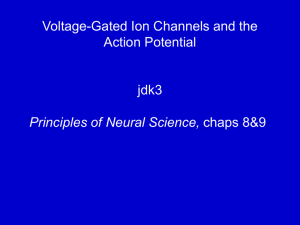quiz0418_JS
advertisement
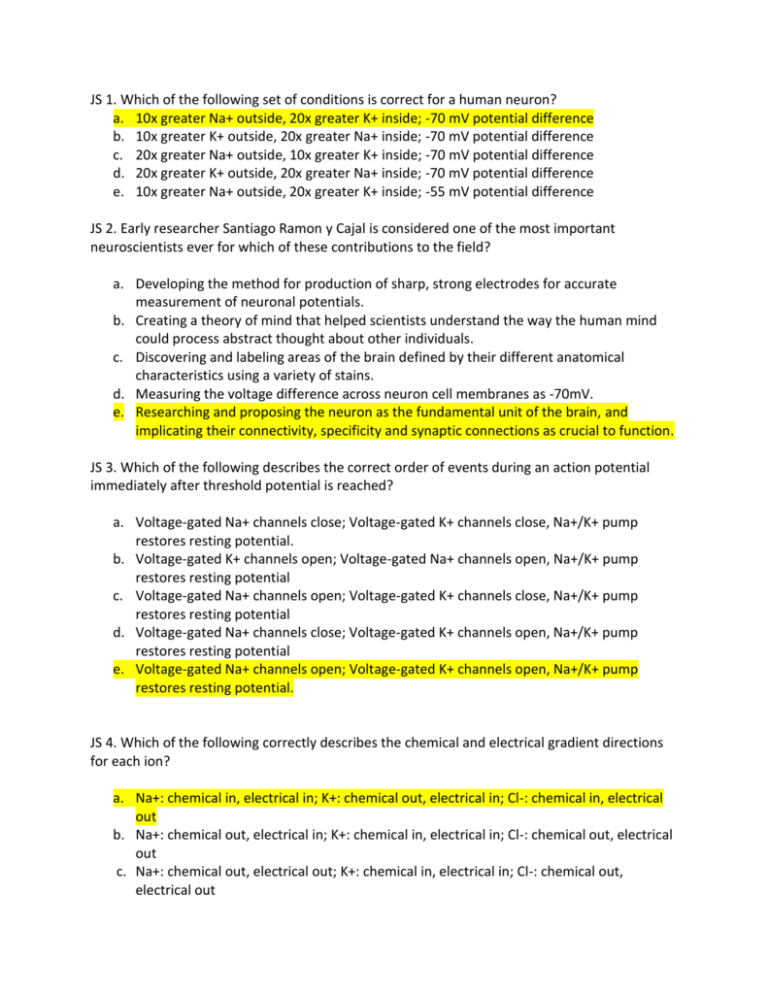
JS 1. Which of the following set of conditions is correct for a human neuron? a. 10x greater Na+ outside, 20x greater K+ inside; -70 mV potential difference b. 10x greater K+ outside, 20x greater Na+ inside; -70 mV potential difference c. 20x greater Na+ outside, 10x greater K+ inside; -70 mV potential difference d. 20x greater K+ outside, 20x greater Na+ inside; -70 mV potential difference e. 10x greater Na+ outside, 20x greater K+ inside; -55 mV potential difference JS 2. Early researcher Santiago Ramon y Cajal is considered one of the most important neuroscientists ever for which of these contributions to the field? a. Developing the method for production of sharp, strong electrodes for accurate measurement of neuronal potentials. b. Creating a theory of mind that helped scientists understand the way the human mind could process abstract thought about other individuals. c. Discovering and labeling areas of the brain defined by their different anatomical characteristics using a variety of stains. d. Measuring the voltage difference across neuron cell membranes as -70mV. e. Researching and proposing the neuron as the fundamental unit of the brain, and implicating their connectivity, specificity and synaptic connections as crucial to function. JS 3. Which of the following describes the correct order of events during an action potential immediately after threshold potential is reached? a. Voltage-gated Na+ channels close; Voltage-gated K+ channels close, Na+/K+ pump restores resting potential. b. Voltage-gated K+ channels open; Voltage-gated Na+ channels open, Na+/K+ pump restores resting potential c. Voltage-gated Na+ channels open; Voltage-gated K+ channels close, Na+/K+ pump restores resting potential d. Voltage-gated Na+ channels close; Voltage-gated K+ channels open, Na+/K+ pump restores resting potential e. Voltage-gated Na+ channels open; Voltage-gated K+ channels open, Na+/K+ pump restores resting potential. JS 4. Which of the following correctly describes the chemical and electrical gradient directions for each ion? a. Na+: chemical in, electrical in; K+: chemical out, electrical in; Cl-: chemical in, electrical out b. Na+: chemical out, electrical in; K+: chemical in, electrical in; Cl-: chemical out, electrical out c. Na+: chemical out, electrical out; K+: chemical in, electrical in; Cl-: chemical out, electrical out d. Na+: chemical in, electrical out; K+: chemical in, electrical out; Cl-: chemical out, electrical in e. Na+: chemical out, electrical in; K+: chemical out, electrical out; Cl-: chemical in, electrical in JS 5. True or False: Ligand-gated channel proteins are activated by ions such as Na+ and Cl-.
